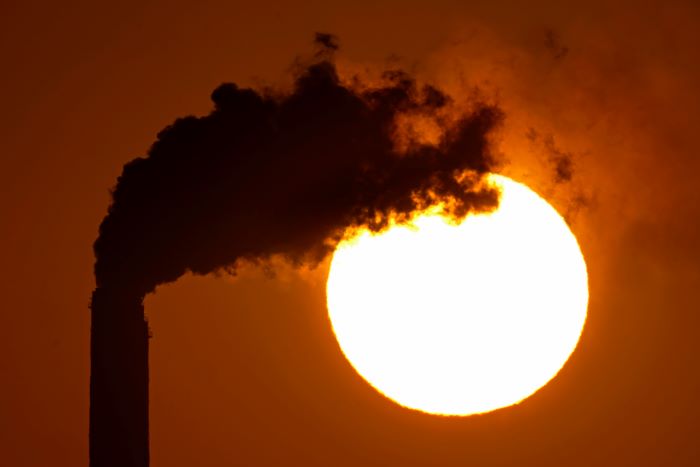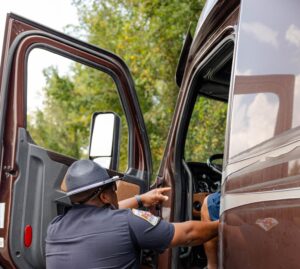WASHINGTON — The Biden administration is setting tougher standards for deadly soot pollution, saying that reducing fine particle matter from tailpipes, smokestacks and other industrial sources could prevent thousands of premature deaths a year.
Environmental and public health groups hailed the new Environmental Protection Agency rule finalized Wednesday as a major step in improving the health of Americans, including future generations. Industry groups warned it could lead to the loss of manufacturing jobs and even shut down power plants or refineries. Business groups and Republican-leaning states are likely to challenge the rule in court.
EPA Administrator Michael Regan said the rule would have $46 billion in net health benefits by 2032, including prevention of up to 800,000 asthma attacks and 4,500 premature deaths. He said the rule will especially benefit children, older adults and those with heart and lung conditions, as well as people in low-income and minority communities adversely affected by decades of industrial pollution.
The rule “really does represent what the Biden-Harris administration is all about, which is understanding that healthy people equal a healthy economy,” he told reporters Tuesday. “We do not have to sacrifice people to have a prosperous and booming economy.”
The rule sets maximum levels of 9 micrograms of fine particle pollution per cubic meter of air, down from 12 micrograms established a decade ago under the Obama administration.
The rule sets an air quality level that states and counties must achieve in the coming years to reduce pollution from power plants, vehicles, industrial sites and wildfires. The rule comes as Democratic President Joe Biden seeks reelection, and some Democrats have warned that a tough soot standard could harm his chances in key industrial states such as Pennsylvania, Michigan and Wisconsin.
Administration officials brushed aside those concerns, saying the industry has used technical improvements to meet previous soot standards and can adapt to meet the new standard as well. Soot pollution has declined by 42% since 2000, even as the U.S. gross domestic product has increased by 52%, Regan said.
“So we’ve heard this argument before, but the facts are well-established that these standards really will increase the quality of life for so many people, especially those who are disproportionately impacted,” he said.
Strict measures already put into place and those that are still proposed by the federal government have drawn ire from many, including those in the trucking industry.
Leaders from the Clean Freight Coalition (CFC) met with officials from the Joint Office of Energy and Transportation (Joint Office) in the summer of 2023 to discuss the challenges and opportunities of transitioning the nation’s commercial truck fleet to low-and zero-emission vehicles.
CFC cites a massive infrastructure gap as one of the largest hurdles to a seamless transition away from carbon-based fuels — one that policymakers need to focus on now, says the CFC.
Manish Bapna, president and CEO of the Natural Resources Defense Council, an environmental group, said the EPA was “putting public health first by requiring polluters to cut soot from the air we all breathe.”
Ben Jealous, executive director of the Sierra Club, said that opponents’ “resistance is a stark reminder that the fight for clean air and a healthier future is far from over.”
The new rule does not impose pollution controls on specific industries; instead, it lowers the annual standard for fine particulate matter for overall air quality. The EPA will use air sampling to identify counties and other areas that do not meet the new standard. States would then have 18 months to develop compliance plans for those areas. States that do not meet the new standard by 2032 could face penalties, although EPA said it expects that 99% of U.S. counties will be able to meet the revised annual standard by 2032.
Industry groups and Republican officials dispute that and say a limit of 9 micrograms per cubic meter could sharply increase the number of U.S. counties in violation of the soot standard. Companies in those places would have difficulty obtaining permits to build or expand industrial plants.
The American Forest and Paper Association called the new rule “unworkable” and said it undermines Biden’s promise to increase manufacturing jobs in the U.S.
“We are very concerned that many of the modernization projects in the paper and wood products industry and across U.S. manufacturing will no longer be able to move forward,” said Heidi Brock, the group’s president and CEO.
The paper lobby was among 71 industry groups that warned the White House in a letter that a lower soot standard could force companies to locate new facilities in foreign countries with weaker air-quality standards, thereby undermining Biden’s economic and environmental goals.
The standard for particle pollution, more commonly known as soot, was set in late 2012 under Democratic President Barack Obama and left unchanged by Republican President Donald Trump, who overrode a scientific recommendation for a lower standard in his final days in office.
EPA scientists have estimated exposure at current limits causes the early deaths of thousands of Americans annually from heart disease and lung cancer, along with other health problems.
The new EPA rule would require states, counties and tribal governments to meet a stricter air quality standard for fine particulate matter up to 2.5 microns in diameter — far smaller than the diameter of a human hair. The standard would not force polluters to shut down, but the EPA and state regulators could use it as the basis for other rules that target pollution from specific sources such as diesel-fueled trucks, refineries and power plants.
EPA said it will work with states, counties and tribes to account for and respond to wildfires, an increasing source of soot pollution, especially in the West. “EPA recognizes the increasing challenges and human health impacts that wildland fire and smoke pose in communities all around the country,” the agency said in a fact sheet.
EPA allows states and air agencies to request exemptions from air-quality standards due to “exceptional events,” including wildfires and prescribed fires.
A 2023 report by the American Lung Association found that nearly 64 million Americans live in counties that experience unhealthy daily spikes in soot pollution and nearly 19 million live in counties that exceed annual limits for soot pollution. Most of those counties were in 11 Western states, the report said. People of color were 61% more likely than white people to live in a county with unhealthy air quality, the report said.
Bakersfield, California, tied with Visalia in the state’s San Joaquin Valley as the most polluted city for year-round particle pollution. Six of the 10 cities with the most soot pollution were in California, and two more were in the West: Medford, Oregon and greater Phoenix.
The Trucker Staff contributed to this report.
The Associated Press is an independent global news organization dedicated to factual reporting. Founded in 1846, AP today remains the most trusted source of fast, accurate, unbiased news in all formats and the essential provider of the technology and services vital to the news business. The Trucker Media Group is subscriber of The Associated Press has been granted the license to use this content on TheTrucker.com and The Trucker newspaper in accordance with its Content License Agreement with The Associated Press.













